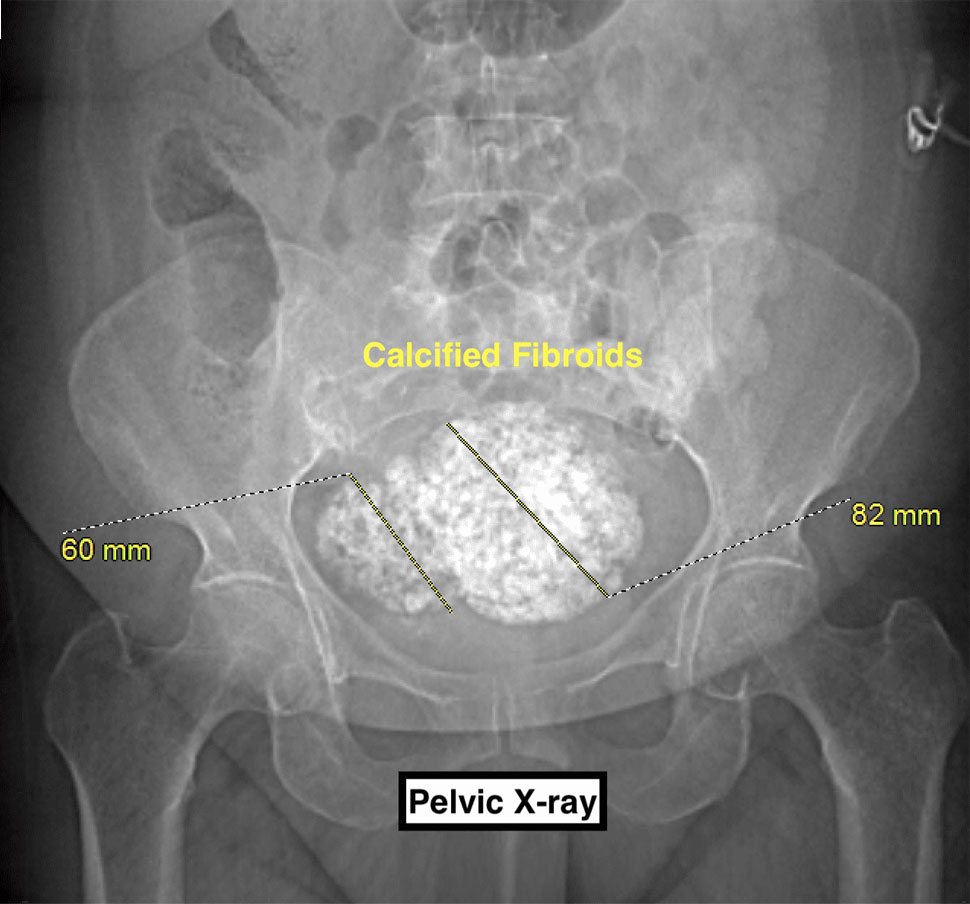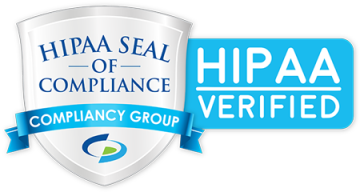Calcified Uterine Fibroids
Uterine fibroids (also known as leiomyomas or myomas) are benign uterine tumors made of smooth muscle cells, with an incidence of 20%–40% of women in their reproductive years.1 Some fibroids are not benign however a cancerous fibroid is very rare, about 0.4%2.
Fibroids can be of different sizes, in different locations of the uterus, and grow at different rates. When fibroids first appear, they are made of smooth muscle tissue. So what are calcified fibroids? A calcified fibroid is an untreated fibroid that has mineralized with calcium deposits. These calcium deposits harden the fibroid, similar to a rock.
Calcified fibroids can occur due to one of two reason.
Sometimes fibroids can grow so fast that they outgrow their blood supply. There is only a limited supply of blood to the uterus, so once they outgrow their blood supply they start to “degenerate.” The muscle inside the fibroid starts to break down as it is the farthest from the blood supply. Consequently, the center receives less amount of nutrients and start to degenerate and calcify, while the rest of the fibroid remains active and grows.
The second reason is age. Although calcified fibroids can happen to anyone with a uterus, it is much more common in older women that have reached menopause. This is because degeneration of fibroids occurs during menopause.


Risks of Calcified Fibroids
Patients are often told that once they reach menopause their fibroid will shrink and their symptoms will resolve. However if you are close to menopause with a large fibroid, these fibroids will calcify, not shrink! Symptomatic calcified fibroids carries a risk of requiring hysterectomy.
Doctors fail to inform patients which symptoms will resolve. While the symptoms of bleeding and menstrual cramping will resolve in menopause, other symptoms will persist, such as urinary frequency and pelvic pressure. Unfortunately if the fibroids are calcified at this point, the only option is a hysterectomy.
The more calcified a fibroid is, the harder it is to treat it with less invasive options such as the non-surgical uterine fibroid embolization (UFE) procedure or surgical myomectomy. As a result someone who is post menopause with calcified fibroids will have no option other than a hysterectomy. This can be an unwelcomed surprise for someone who was waiting for menopause to avoid surgery. Hysterectomy is a major surgery with surgical risks and a long recovery period. Not ideal in someone that is postmenopausal with potentially other medical issues.
Symptoms of Calcified Uterine Fibroids
Symptoms play an important role in deciding the appropriate form of treatment for someone with uterine fibroids.1
When the fibroid is completely calcified, it becomes a hardened mass. Since it is at the end of its life cycle, it usually causes no pain or bleeding. However, since it is a space occupying mass it can cause symptoms such as pelvic pressure, urinary frequency, abdominal distention, bloating, constipation, and even push on the nerves and veins of the pelvis.
If you are already experiencing symtpoms of a large fibroid uterus, it would be important to seek out a consultation to make sure you won’t be at risk of a hysterectomy post menopause.
Diagnosis of Calcified Uterine Fibroids
Fibroids can be diagnosed by ultrasound or MRI. However if a patient is postmenopausal, it is important to find out if the fibroids are calcified before considering treatment. At our fibroid center our specialist will order pelvic x-rays on postmenopausal patients to evaluate for calcified fibroids. Pelvic x-rays are great at not only showing the bones but also any mineralization, and will commonly show if a fibroid is calcified.
Treatment of Calcified Uterine Fibroids
Treatment options for calcified fibroids is dependent on the symptoms, imaging findings and patient wishes.1
For fully calcified fibroids that don’t cause symtpoms, no treatment is required. However when calcified fibroids are causing significant discomfort then a hysterectomy can be performed. If there are a combination of calcified and non-calcified fibroids, UFE maybe an option.
How To Prevent Calcified Fibroids
If you have large fibroids that are causing you symptoms, the best solution may not be waiting for menopause. These fibroids will calcify potentially leaving persistent symptoms.
The non-surgical uterine artery embolization procedure is an outpatient proven procedure that has been performed for over 20 years. This procedure will treat the fibroids causing them to shrink and resolve symptoms prior to menopause, eliminating the risk of hysterectomy.
Does Non-Surgical UFE Work
Nearly 90 percent of patients have significant improvement and are satisfied from having undergone the non-surgical fibroid embolization procedure, saving the uterus.3 Nearly a similar number of patient report they are still happy with their results 5 years later.4 Abnormal fibroid bleeding usually stops within one to two months, but it may stop immediately. On average, fibroids shrink approximately 40 percent to 60 percent in size by six months, and they may continue to shrink for a year or more.
Why California Fibroid Center?
Not all embolizations are the same. Uterine artery embolization may be offered by practitioners of varying levels of experience. An academic hospital will have doctors in training that will often place too many beads into the artery. Other practitioners may use products or suboptimal techniques that are outdated.
Our center specializes in embolizations and our staff is uniquely trained to care for these type of procedures, from the pre-op to the post-op period. Our specialist performs a high number of embolization for not only the uterus but also in other more high risk and complex organs, such as the kidney, liver, lung and others. Patients are often surprised how quick and simple the UAE procedure was for them, but this comes at the experience of our specialist who performs a variety of complex embolizations safely. This diversity of experience has resulted in our specialist to treat complex fibroid and adenomyosis cases safely and effectively.
Our specialist continually keeps up with the research to make sure that he brings the best and newest technology to our center. We are also always collecting feedback from patients and modifying how we provide care so that patients have the best level of experience.
Have More Questions?
Take a look at our FAQ page (Click here)
Contact Us Today
Request an appointment to meet with our fibroid specialist who will review your imaging, labs and history to determine if you are candidate for the procedure, and the outcomes you can expect. Each woman is an individual and should discuss the potential risks and benefits of fibroid embolization and other Treatments with our doctor to decide which option is best for her.
Appointments are available via an online video telehealth platform or in person at one of the offices in Los Angeles, Orange County or San Diego. Why should you choose us? Read here.
- Khan AT, Shehmar M, Gupta JK. Uterine fibroids: Current perspectives. Int J Womens Health. 2014;6(1):95-114. doi:10.2147/IJWH.S51083
- Knudsen NI, Wernecke K-D, Kentenich H, David M. Comparison of Clinical Symptoms of Assumed vs. Actual Uterine Fibroids – Symptoms Described by Patients and Ultrasound Findings. Geburtshilfe Frauenheilkd. 2020;80(3):316-323. doi:10.1055/a-0991-0105
- Lohle, P. et al. Long term outcome of uterine artery embolization for symptomatic uterine leiomyomas. JVIR 2008; 19:319-326
- Gupta JK, Sinha A, Lumsden MA, Hickey M. Uterine artery embolization for symptomatic uterine fibroids. Cochrane Database of Systematic Reviews 2014, Issue 12. Art. No.: CD005073.









